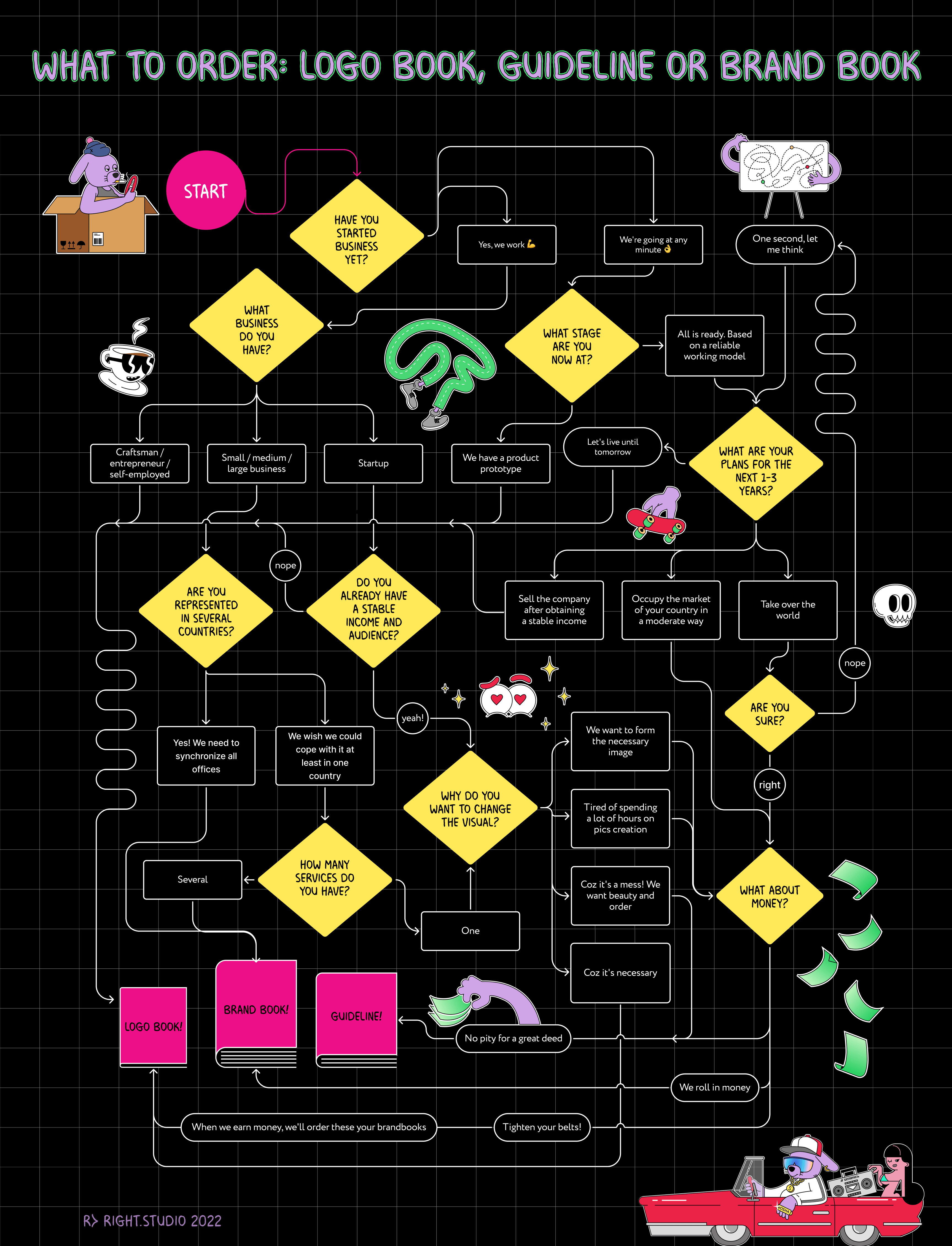The brand book that won’t steal the whole budget
Alas, not all brand books are white-handed. We’re going to show you the difference between a logo book and a guideline, as well as between a guideline and a brand book. How to find out what from this is helpful for your brand and how not to buy a pig in a poke for lots of money.
Branding services cost completely different on the market: ‘brand book development’ varies from hundreds to tens of thousands of dollars in agencies and studios. How to understand that you are buying a useful and sufficient document of your brand, which will be applicable in practice, and won’t be forgotten on the shelf?
In this article we’ll figure out how to evaluate brand design work correctly, state what you need and, it’s important, don’t overpay.
Don’t have time to read the full article? Here are the answers to your questions:
How not to overpay for brand design
There are three types of documentation for a brand: a logo book, a guideline and a brand book. Of course, there’re many more of them thanks to marketers’ prayers and fantasies. On the Internet you’ll find: a miniguide, a brand bible, corporate identity documentation, a cutguide, a brand standards passport… 😑
It’s important to understand that branding police don’t exist. There’s no single standard on the market for how exactly each of these documents should look. Because of this, there are many interpretations, and someone sells only brand books, because it sounds more expensive, someone measures the number of pages. Three formats are considered the most common and accepted in the marketing community: a logo book, a guideline and a brand book. We recommend dwelling on them.
In order not to fool yourself with marketing terms and not count sheets, there are two main rules for choosing a brand documentation format:
- the number of pages doesn’t matter,
- choose the format that suits your business needs.
Principle 1. Number of pages ≠ benefit
There is a common statement that the more pages in a document, the more similar it is to a brand book, the less similar it is to a logo book.There is a common statement that the more pages in a document, the closer it is to a brand book, the less it is to a logo book.
Undoubtedly, there is more information in a brand book, and consequently, its volume is thicker. But sometimes there is manipulation of the form. This is used by unscrupulous freelancers, and sometimes by companies: they add unnecessary slides, spread a paragraph of information over 5 pages with title pages, half-titles and other curtsies. As a result, a logo book turns into a brand book — but, alas, only in monetary terms. Regarding the content, this is still the same logo book.
The good news is that it’s not necessary to guess what is hidden under the terms of the next implementer. There is a golden rule:
Be affected not by the number of pages or the title, but by the accuracy and the task that you want to solve with its help.
Principle 2. Task first → form later
What is important is not how thick the result is in the file, but its practical applicability. Rely on plans for the next 1-2 years and don’t make the task wider than it is: if you have just started, you don’t need to make a brand book for the business of the future from the Fortune 500 list.
Let’s have a look at the reason why startups, even with big ambitions, need a logo book more often. The stages of startup development are too short: design, MVP, verification with users, refinement, scaling — everything changes at each stage. The hypothesis didn’t work → reformatted; worked → scaled the idea. And so on until the project becomes stable and predictable.
This doesn’t mean that a startup should live without an identity until the stage of stability. It just needs to be flexible, not run many years ahead and not be based on mere ambitions. This is unlikely to bring anything apart from losing money.
It makes sense to do a guideline when the business has been working stably for at least a year, there is a reliable audience and income.
How to understand what you need: a logo book, a guideline or a brand book
To make it easier to understand, keep a flowchart that will help you decide on the choice of document depending on your goal.

What’s inside the standards passport
So, the task is clear, the form — too. Now you can deal with the terms. As we’ve already said, there is no conditional All-Union State Standard on the market, so the content of the standards passport may differ from studio to studio.
Here’s how it works in our case.



